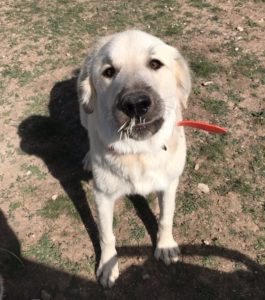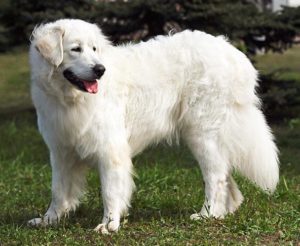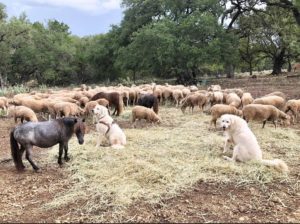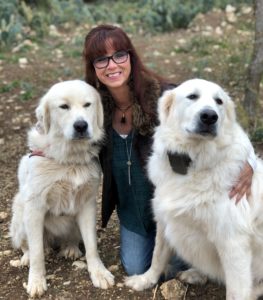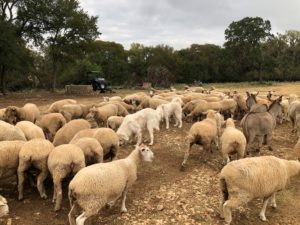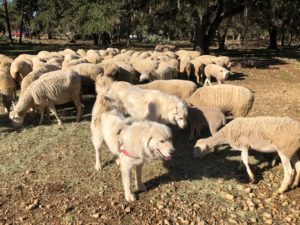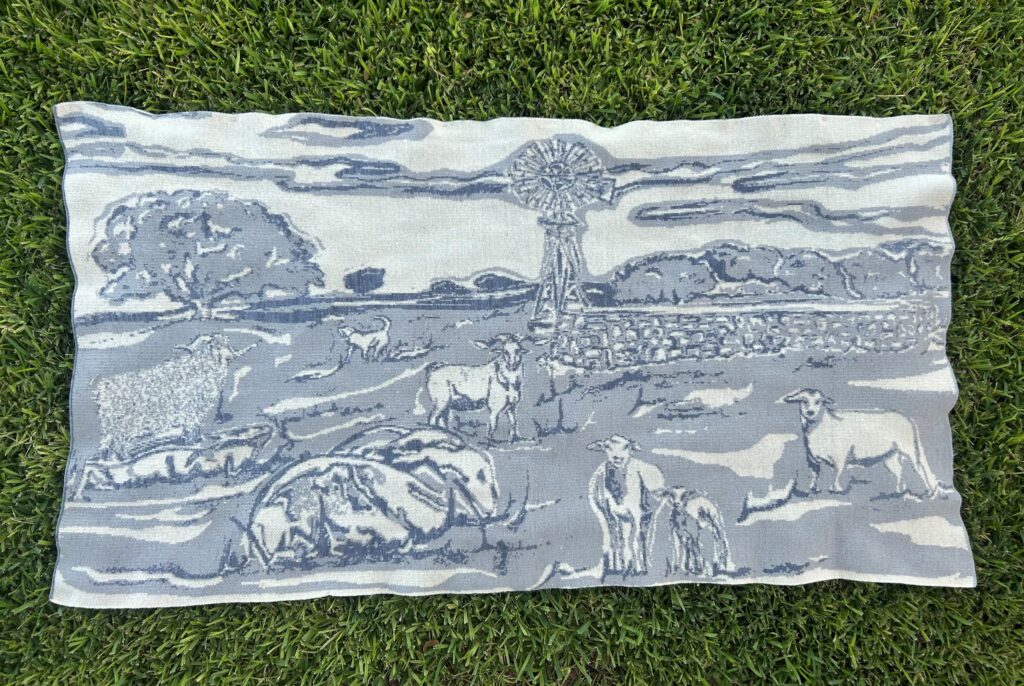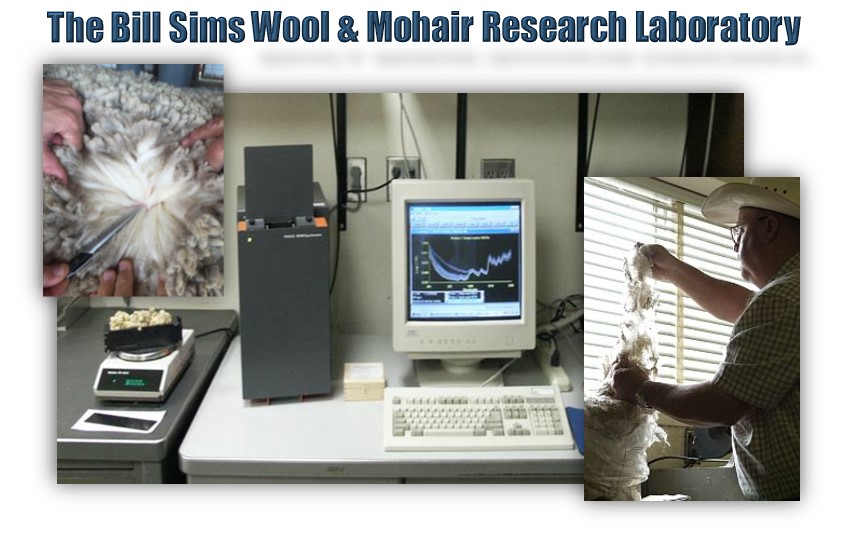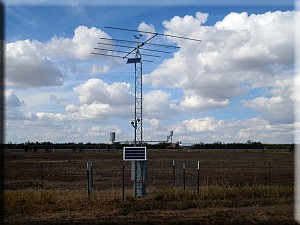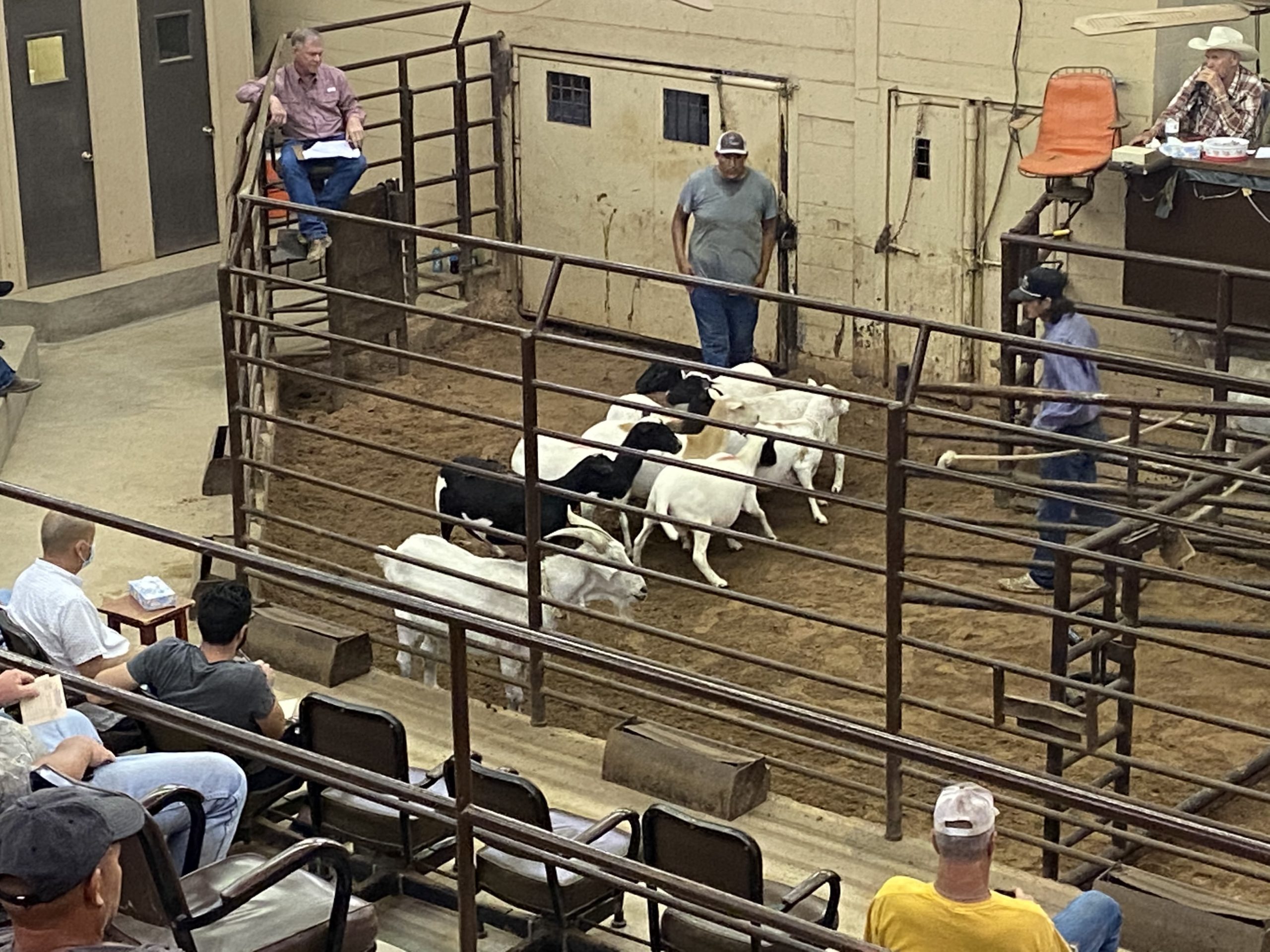Home & Work
Merry Christmas! The boys are out of college for the semester and helping me with projects around the house. New appliances are a welcome addition for us this month. Painting a few rooms and a bathroom update is on the list this month during the winter break.
It’s important to take advantage of the slower days during the winter to take care of projects that are needing your attention such as repairing dog feeders or feeding stations. You may want to provide a higher quality dog food, as your dogs will be burning more calories to stay warm during the cooler days and nights. Typically, dog food with animal protein listed as the first and/or second ingredient can maximize the nutrient level for your LGD.
With hunting season under way, it’s important to remind hunters about your LGDs on the ranch, especially if you have new or young LGDs. Remind hunters how you want them to interact with your LGDs, if they come into contact. That way the LGDs don’t end up lingering around hunting camp or worse a hunting blind. If possible, move dogs and stock to pastures with limited hunting. If problems arise, it might be best to pen up your LGDs when hunting activity is at its peak on your property. It keeps your hunters happy and keeps your dogs from learning bad behaviors such as coming to headquarters for treats or following vehicles.
LGD Puppy Bonding Project
All the puppies in the current round of the bonding project are doing great and growing fast. All the pups have been placed into 1-acre pens now with their charges. They will be in the 1-acre pens until they are 6 months of age. At that point, GPS trackers will be placed on all the dogs and stock from the bonding pens. Dogs and stock will be released into larger pastures and tracked for 2 months. Once the pups are 8 months old, we will place half of them at our research ranches for tracking and at cooperating producer ranches. The pups will continue to be tracked until they are 18 months of age.
Our second round of pups from the bonding project, the Legends of Country Music, were placed at our research ranch in Menard to help our older dog Miley guard the Dorper ewes who are lambing. After about a week at the ranch, Waylon and Johnny started to roam, even though they had never roamed at the AgriLife Research and Extension Center in San Angelo and were bonded in pens with hot wire. At first, they left their charges and joined the dogs with the meat goats. However, after about two weeks they left the ranch completely and ended up at a neighbor’s ranch approximately 2 miles from our research ranch. They were retrieved twice, and each time dropped back off with the Dorper ewes. After they left a third time and we decided to bring them back to the Center. Observing the dogs at the Center, we concluded that they were following vehicles, not just randomly roaming off the ranch in Menard. We have been having new fencing installed in Menard on several pastures. We believe that the dogs started roaming because they were following the fence crews around the ranch and then continuing as they left each day.
We decided to separate Waylon and Johnny to see if it would make a difference in their behavior. Thor was also roaming at our ranch in Ozona and visiting his three friends, the Stooges. We have placed both Thor and Johnny together at the ranch in Menard and so far, neither dog has roamed again, and they are staying with their charges. Sometimes a change of location can make all the difference in how an LGD works for your operation. Waylon is also staying with his new charges at the Center and has only left his pasture once. Again, we believed that he was just following a truck that was feeding stock. Resolving this habit of following a truck is a top priority for the Legends of Country Music. Like their namesakes, they like to be “On the Road!”
The pups that are officially in the bonding project are all bonded with four different species so that they can be easily
moved to guard in a new location. They are then given a quick re-bond to the new stock they will be guarding and then released on one of our research ranches or a cooperating producers ranch. However, the Legends of Country Music were only bonded to Dorper sheep which we believed would create a stronger bond. We were having predation issues on our Dorper sheep in Menard and we believed that a straight bond would ensure the dogs staying with the hair sheep. However, the dogs still ended up leaving their charges and stayed with the meat goats and four other dogs. Bonding to a specific species does not guarantee that your LGDs will stay with that species as we believed it would!
Hulk and Goliath are doing well without Thor at the ranch in Ozona. Goliath stays with his sheep while Hulk floats between the sheep and Angoras. Goliath still hasn’t figured out what happens when you play with a porcupine, however. This is at least the fourth time he has gotten quills in his face!
LGD Breed Spotlight – Slovensky Cuvac
The origins of the Slovensky Cuvac breed can be traced back as far as the 17th century. It is also known as the Slovak Chuvach, and the Tatransky Cuvac. It is a large Slovakian breed known for its plush white coat and its livestock guarding abilities. The Slovensky is very similar to the Kuvasz, however the Kuvasz is a slightly larger breed of dog.
In the early years of the breed, the Cuvac was used as a livestock guardian in the mountains of the Soviet Union. As wolves began to slowly disappear from the countryside, herding practices changed and the Slovensky Cuvac breed nearly went extinct. After World War II, a veterinarian named Antonin Hruza set about to revive the breed and the first written standard was published in 1964. While rare in the United States, the dogs are making a comeback in Europe.
The Slovensky Cuvac has rather long legs and deep broad chest that makes it well suited for mountain terrain. The dogs are white as are many other LGDs from Europe. Their coat is dense and doubled with a moderate wave to it. The hair is short on the face and front of legs and longer on the body but without feathering on the tail as in other LGD breeds. The Slovensky Cuvac is a large dog that stands anywhere from 22 to 28 inches tall and weighs 70 to 100 pounds when mature.
Aa good guard and watch dog, as well as guide for shepherds, the Slovensky Cuvac has o proven its worth in the guarding of cattle and driving of poultry and other domestic animals to pasture. The Slovensky Cuvac is a powerful, calm, loyal flock guardian. It is a bold protector of its area and pack, whether it is livestock or people. These dogs have been known to be very affectionate with members of their human family but suspicious of outsiders. They are fearless guardians that will fight any intruder, even large predators like bears or wolves.
Sources: Dohner, Janet Vorwald. Farm Dogs: A Comprehensive Breed Guide to 93 Guardians, Herders, Terriers, and Other Canine Working Partners. Storey Publishing, 2016, https://www.dogbreedinfo.com/slovenskycuvac.htm , https://www.ukcdogs.com/slovac-cuvac
Breeder/Producer Profile
This month’s producer using LGDs is Shirley Pfeiffer Kilgore from New Braunfels, Texas.
Q. Please describe your ranch.
-
- What type of livestock do you have?
- How many head of stock do your dogs’ guard?
- How many acres do your dogs’ guard?
A. I am the owner of a small sheep ranch located outside of New Braunfels, approximately 1 mile from Gruene at the beginning of the Texas Hill Country. I am the third-generation sheep rancher which dates to 1939 when my family bought the ranch now known as the Historic
Pfeiffer Ranch. The ranch is approximately 250 acres with some large fields, heavy cedar, live oaks, elms, native pasture grasses, mesquites, and huisache. I currently have approximately 200 head of Rambouillet sheep with fine wool. Besides sheep I also have some cattle, horses, miniature donkeys, and a llama named Boo here on the ranch as well. Throughout the years since I was a child, I have watched more and more farm land around me being gobbled up by new house construction and businesses which in turn has crowded my ranch with more and more predators that love to prey on my sheep herd. We have coyotes, bobcats, owls, caracara, and a few mountains lions that occasionally come to visit and run through the ranch. Over the years these coyotes have caused more and more problems in even trying to maintain any kind of sheep herd worth keeping. It became such a problem that state trappers were called in to try different devices or techniques that did make some difference in the coyote population, but not enough to keep them away for very long, especially since a female coyote can have such large litters of pups. At one point not long ago, the coyotes were so bad that I was unable to even keep 1/4 of my new lamb stock that was to be sold at market for profit. At its worst, I really considered not having sheep at all anymore, but then I decided on trying Livestock Guardian Dogs to see if my success rate would go up.
Q. How long have you used LGDs?
A. After making my decision approximately 5 years ago to try Livestock Guardian Dogs to protect my sheep I have never looked back. It was
the absolute best decision I have ever made. I have never once looked back on my decision to try these dogs and regretted it. I cannot believe the 100% success rate that I have had with them. I have always loved dogs throughout my childhood. We had a variety of farm dogs, some for companionship and some dogs like the border collies that worked our herds. Of course, these dogs are very different than the Livestock Guardian Dogs that protect my livestock.
Q. How many dogs do you use?
A. I have used only two dogs during the last 5 years. My dog’s names are Aoife (Ee-fa) who is 100% Great Pyrenees and weighs approximately 130 lbs. and my 2nd dog Evanna who is 1/4 Akbash and 3/4 Great Pyrenees and weighs about 110 pounds. These dogs are siblings but from different litters and are only half related to each other by having a different dog parent on one side. Both of my dogs came when they were 6-8 weeks of age which is extremely important in the bonding process. I chose to have both of my dogs spayed when they reached 1 year of age. I waited for that period because of their large dog breed size and that time frame was also a recommendation by my veterinarian.
I am fortunate enough to work on the ranch every day. Starting out with new LGD pups 5 years ago, I wanted to come up with my own training ideas. I needed them socialized yet bonded with their charges. I did lots of reading on LGDs and decided that I would use a smaller dog pen area where my young pups would stay with their herd at night in a larger sheep pen so they were protected from harm’s way being so small at such a young age. During the day while my sheep herd would go out grazing, I decided that I would take my young pups out for approximately 2 hours to show them how important their job was going to be; I was their shepherd. We followed the sheep herd in the fields to learn sights and sounds. It was during this time I also taught my dogs not to kill the predators but to chase them away which honestly comes with their instincts as they get older. After 2 hours of training the pups it was always early afternoon. They were then put back into their dog pen area until the evenings when the sheep herd would come back in from grazing. At that time my young pups would be let out to become a part of their charges again to familiarize them and become more bonded with the sheep until it was time to be put up in their dog pen for safety during the night time hours. I did this method until they reached 8 months of age when they then went out on their own to guard. Even though this practice may be unusual, I had a great success rate in how my dogs came to be bonded with their herd.
Now that my LGDs are grown they have different jobs during the year. During lambing season my dog Aoife guards my newborns and their mommas in a smaller sheep pen area to give my newborns a chance to get on their feet. My other dog Evanna goes with the sheep herd everyday into the fields or pasture to protect the herd from predators. In the evenings all my sheep herd come in to a large fenced in area for additional protection by both dogs. After lambing season is over both my LGDs guard the entire herd during the day and night. I have had an unbelievable success rate by doing this method and the dogs do their jobs very well.
Q. Do you prefer a specific LGD breed?
A. Some producers say that there are very specific differences in all the different LGD breeds. To some degree maybe this is true, however, I believe that each breed has their own strong guarding capabilities.
In my opinion, one example of this may be the Kangal or Anatolian Shepherds that can guard against bears, wolves, or larger predators. Or perhaps using the Maremma Guard Dog breed which many say that breed of dog makes even a stronger bond with their charges and never roams. Or another example is perhaps the Great Pyrenees that guard against the coyotes, bobcats, caracara but roam more frequently over a vaster area than other LGDs may and may bark more frequently warning the predators to stay away. Or perhaps lastly the great Spanish Mastiff that can be fearless and keep away predators such as a large moose, bears, or wild boars. So having said this, I believe that all LGDs, no matter what the breed you chose and for what specific reasons you need them for, can do their jobs efficiently given what types of animals they are guarding and to what predators they are protecting against. The bottom line is as a producer you must be able to trust your breed of LGD and believe in their ability to do their job.
I spend lots of time around my animals and making sure they are cared for. Making sure my LGDs have proper food, shots, checking for burrs in their feet and coat, bathing if necessary, looking at and down their ears and checking their teeth are all necessary things I do as a producer to make sure my dogs are cared for. The bottom line here is over all maintenance is crucial to a successful LGD.
Q. Do you have an LGD mentor?
A. Over the years I have really enjoyed following a man by the name of Robert Nelson Lockey. He has a small sheep farm in Kentucky and has
quite a few LGDs, all purebred Great Pyrenees, and always has been so helpful in answering my questions that I had especially when it came to my GPs. He has been a very important asset to me starting out and learning about Livestock Guardian Dogs.
Robert has been on several social media sites through the years, and I follow his own site Great Pyrenees Adventures and Advice page. Of course, there are so many social media sites for LGDs.
Q. What’s the one thing you wish you knew before starting to use LGDs?
A. I wish I would have known that Livestock Guardian Dogs and their protection existed at all to be honest. I was not aware of LGDs and what they could do for me until about 6 years ago. We were relying on state trappers so heavily to control the coyote population here as well as other predators at that time that it was then I determined even with that type of protection it just was not enough and I needed to do something else and fast. It was in that moment that I decided that the best way of doing this was through the use of the internet and social media. After doing a lot of reading about Livestock Guardian Dogs, I wanted to immediately get started. I wanted to get started on learning what needed to be done to make this protection work for me and what breed would work best for me and my livestock. I knew it would take time since I was just starting out and starting out with 6-8-week-old pups, but I had read so much about each breed that I was very excited to begin.
Q. What is the biggest thing you would recommend a new LGD user?
A. First and foremost- Treat your LGD like the asset they are! They complete your success in raising your livestock. They can be your most valuable tool and for them to be successful, you must set them up to succeed right from the start.
There are several very important things that I do to help my GP’s success.
- Good food with protein listed first, water, and vet care.
- Microchip and tag your LGD, so they can find their way home if lost.
- Use GPS trackers. This is so important for you as the producer, knowing your dog can be found at all times and not possibly losing your dog in a snare or attacks from predators or even just wandering off where they cannot be found.
- Reinforce positive behavior. Sometimes your LGD may have a bad day, take a step aside, place your LGD back amongst its charges and make positive gestures so your LGD is successful.
A good LGD is worth its weight in gold.
Remember your LGD has a tough job! They are in all kinds of weather hot, cold, ice, snow, sleet, or rain. So, be sure to take care of your LGD.
And lastly, READ, READ, READ and ask QUESTIONS. The more useful information you have, the better you will set your LGD up for success.
LGD Timely Tips
Every Tuesday check out our Facebook page @TAMUlivestockguardog for Tuesday’s LGD Tip of the Week!
Since it’s the holiday season, I decided to add a little fun into the timely tips this month. I hope you enjoy the things that an LGD would like in their Christmas stocking and the 10 things for a Merry LGD Christmas!
LGD Stocking Stuffers
- Dehydrated mud puddle in a bag, just add water!
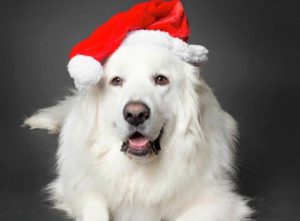
- Big bag of sticks for chewing.
- Bale of fresh hay for bedding.
- Little brother/sister that I could train to guard so I can lay in the shade all day.
- Snow, lots and lots of snow!
- A giant bag of Pupperoni Treats.
- A shedding brush.
- Large water trough with cool water for the warm days.
- Big shade tree near a water trough.
- Collar with the name and contact info of my owners.
10 Things for a Merry LGD Xmas
- Restrain them on the night of the 24th so they don’t scare off Santa and his reindeer.
- A canine calming agent so they don’t bark and wake up the kids while you are putting out the presents you just wrapped at 1a.m.
- A new package of Pupperoni treats so they come to you when you go to catch them in the field.
- A new set of batteries for your flashlight – to see what they are barking at in the night.
- New batteries in the GPS tracker so your kids can find your dog and give him/her their Xmas present.
- Phone number of the local vet on call taped to the fridge if they get into fight with a predator.
- Phone number of the local and regional animal control offices in case your LGD roams on XMAS or is picked up by a “helpful” stranger on a cold XMAS eve and taken 2 towns away.
- ID chip your dog and fill out the contact information online.
- Turn off the holiday blow ups before bed, so your dog doesn’t bark all night at them.
- A lock for the trash can so they don’t get into the leftovers after Christmas dinner.
To provide feedback on this article or request topics for future articles, please contact me at bill.costanzo@ag.tamu.edu or 325-657-7311. The Texas A&M AgriLife Livestock Guardian Dog Program is a cooperative effort by Texas A&M AgriLife Research and the Texas Sheep and Goat Predator Management Board.
Follow us on Facebook: https://www.facebook.com/TAMUlivestockguarddog/
Follow us on Instagram: @tamulivestockguarddog
Follow us on YouTube: https://www.youtube.com/channel/UCF7YbP6bNDV7___6H8mifBA


